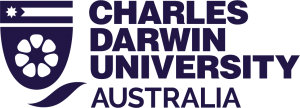Introduction
The great thing about social networking is that all calls are local! Your next learning minute could be just a tweet away. A Professional Learning Network (PLN) can include resources, people and organizations that you rely upon to help you continue learning, keep up to date on developments in your field & provide a sounding board when you need help with a thorny problem. By definition it is personal, this week you will see both Personal and Professional networks mentioned. This video ends with the quote ‘Social Media and PLNs are all about having conversations and building relationships’ to support your learning.
In a recent Twitter conversation about mentors, Maha said:
‘The key thing for me is to build a large PLN but to also focus on particular people in sustained ways, so you know whom to call upon when you need it.’ Maha Bali, 2019
To get started on network we will concentrate on two areas, Twitter and Yammer. Twitter is an open tool for social learning and networking. Yammer is part of the Office 365 suite and can be accessed in CDU from the Portal page. Your organisation may have a similar tool for networking within the organisation.
Read more about PLNs in More Detail below, then take a look at the activities under Try and finally, share your thoughts and comments under Share.
Try
Choose one activity or do them all!
Connect: Go to Twitter or Yammer (23 Things Group) and connect with another educator in your field of interest. – 10 minutes
Consider and write: How important is connected learning to you? What does it currently involve for you? (It’s OK to be a newbie!) – 20 minutes
Try a Strategy: Check out the strategies at Becoming a connected educator: Building your PLN. Choose a strategy and put it in place. – 20-30 minutes.
Blog: Write a blog post about how your PLN has changed or evolved over the last 3 years. – 30 minutes
More Detail
Twitter: Read a short history here. One benefit of this open tool is the short snaps of information that are passed around at speed. The format of a tweet forces a briefness to the message. The point of Twitter is to be public (but it can be private) and engage with one another. Hashtags became popular with this media and are used to search and find related information.
Yammer: this tool is social in nature, among the University community. Not everyone is there. It is an opt-in area which means that people need to sign up to be able to contribute and use the platform. At the time of writing there was over 90 Groups created. Head in and find your point of interest. Yammer has links to SharePoint, OneNote (We’ll learn more in Thing 10) and Teams.
Platforms can be linked together and you will note that Yammer has automated tweets appearing from various hashtags and Twitter accounts.
Social Media Policies are critical for organisations. Read CDU Social Media Policy here: https://www.cdu.edu.au/governance/doclibrary/pol-059.pdf or find the equivalent policy at your institution or workplace. Note the meaning of social learning and the policy section for using social media in learning, teaching and research. This policy can not stand alone and is integrated with other policies including Intellectual Property, Media and Public Commentary, Privacy and Confidentiality and Code of Conduct.
Move onto the Try activities and Share your learning for this week.
Share
Did you Try something this week? Add a comment below on your activity.
Get connected! Tweet @23ThingsCDU or for CDU participants, jump into Yammer and find the 23 Things Group.
Comments are closed.
References
@Bali_Maha (2019). My informal mentors have been the most important for me. I have different people I seek for mentoring for different purposes. The key thing for me is to build a large PLN but to also focus on particular people in sustained ways, so you know whom to call upon when you need it [Twitter]. Retrieved June 12, 2019 from https://twitter.com/Bali_Maha/status/1137627683154792448.
NRC CILT. (2017). Developing your Personal Learning Network. In. Youtube. https://youtu.be/_Fby_VgVpno
Feature photo by Pavan Trikutam on Unsplash



You might also like to read this ‘Thing’ talking about LinkedIn and Academia.edu for Research Socialising https://23thingsforresearch.wordpress.com/2015/08/03/thing-8/
This week, I’ve reached out to some colleagues (via Twitter) who also work in University Library Makerspaces. Hoping to find a few more people who work in academic makerspace, particularly libraries 🙂
That is an area that interests me as well, let me ask our local librarian here and see what we can find.
I find a lot of my professional learning through Twitter. Yesterday I came across a tweet from Kirsten Ries (@grade1ries), sharing a digital essay written as an assignment in her studies in the Master of Ed. (Knowledge Networks and Digital Innovation) through Charles Sturt University.
The essay, Social Media for Educators Leveraging Web 2.0 tools, a where to start and why guide, explores why educators should be on social media, the intersect of pedagogy and technology, current and emerging trends, ethical guidelines and more. It’s worth the read, and as a digital essay, is interactive.
https://www.smore.com/8cwmt
After several years using Facebook, one of the most currently popular social media platform in Vietnam, just for fun and for connecting with family members and friends, last year I started using ‘see first’ feature to customize my timeline because I realized that this media could be used to help out with my career development. This does help me gather academic resources, engage with key influencers in the field of LIS, and follow up to date information from LIS organizations. Thing 5 did broaden my knowledge and experience of PLN definition and practice. I will engage more with my own PLN and try to build another professional network on other platforms like Twitter and LinkedIn.